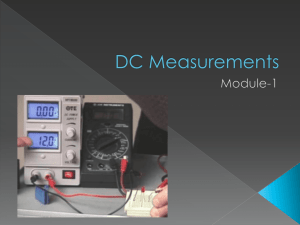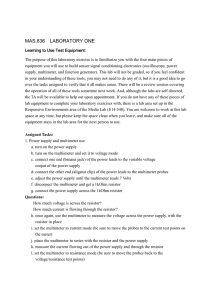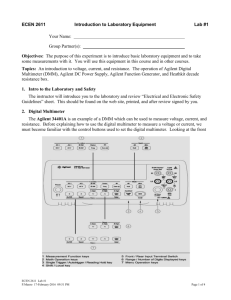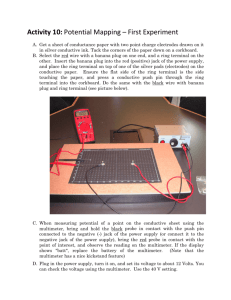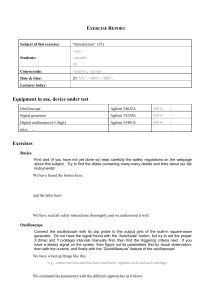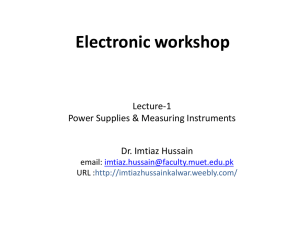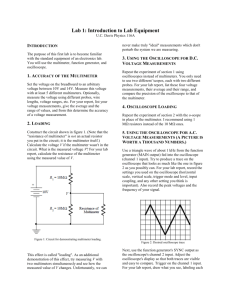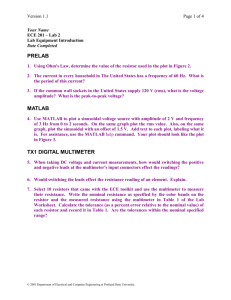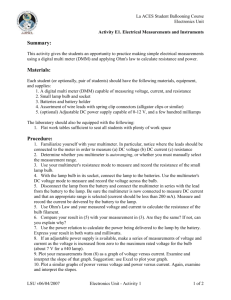Laboratory report
advertisement
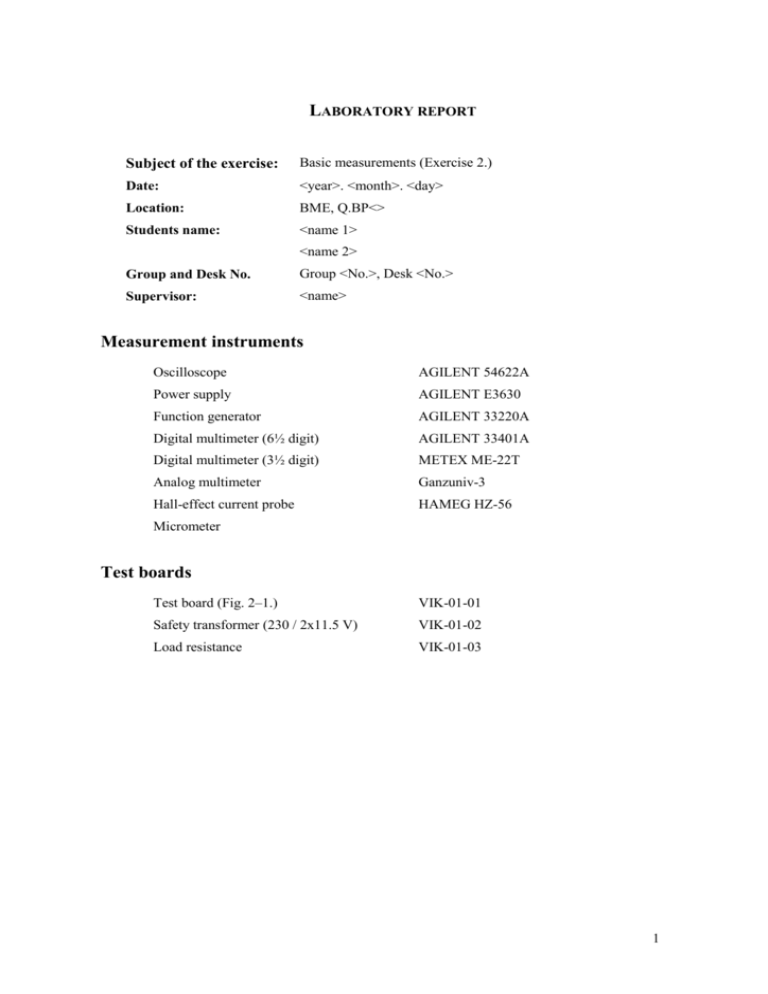
LABORATORY REPORT Subject of the exercise: Basic measurements (Exercise 2.) Date: <year>. <month>. <day> Location: BME, Q.BP<> Students name: <name 1> <name 2> Group and Desk No. Group <No.>, Desk <No.> Supervisor: <name> Measurement instruments Oscilloscope AGILENT 54622A Power supply AGILENT E3630 Function generator AGILENT 33220A Digital multimeter (6½ digit) AGILENT 33401A Digital multimeter (3½ digit) METEX ME-22T Analog multimeter Ganzuniv-3 Hall-effect current probe HAMEG HZ-56 Micrometer Test boards Test board (Fig. 2–1.) VIK-01-01 Safety transformer (230 / 2x11.5 V) VIK-01-02 Load resistance VIK-01-03 1 Report Fig. 2–1. Schematic diagram of the Test board (VIK-01-01) Laboratory exercises0. 1. Practice of basic measurement instruments 1.1. Connect the half-wave rectifier input to the transformer output. Connect the load resistance to the output, and measure the voltage across the load with and oscilloscope. Increase the load current (by reducing the load resistance), and find the critical value at which the output voltage does not remain constant, but it indents at every period for a certain amount. 1.2. Determine the minimal voltage drop between the input and output of the voltage regulator IC to get a stable output voltage! 1.3. By changing the load resistance determine 1.3.1. the relationship between the input and output voltages of voltage regulator IC, 1.3.2. ripple of the input and output voltages, 1.3.3. peak current of the diode and 1.3.4. conduction angle. 1.4. Repeat the previous measurement with the full-wave rectifier. 2 Exercise 2 Basic measurements 2. Thevenin equivalent circuit 2.1. Measure the parameters of the Thevenin equivalent circuit of a battery or power supply! Design your own measurement setup for that. 2.1.1. Select the appropriate measurement instruments for the purpose. Make an effort to have the largest measurement accuracy. 2.1.2. Determine the inner resistance, the open circuit voltage of the Thevenin equivalent, and the uncertainty of the voltage measurement. 3. Measuring distance with micrometer 3.1. Measure the diameter of a wire in 10-20 separate locations! 3.2. Determine the average, variance and A-type uncertainty of the measurement! 4. Calibration of digital multimeter 4.1. Calibrate a 3½ digit multimeter, on a given frequency, applying 10 V by a 6½ digit multimeter! 4.2. Determine the best measurement capability and the uncertainty of the calibration! 4.3. Provide the result of the calibration! 5. Frequency dependence of voltmeters 5.1. Apply a sine wave having 1 V effective value, 50 Hz frequency to a 6½ digit multimeter, to a 3½ digit portable multimeter and to an analog multimeter! 5.2. Increase the frequency starting from 20 Hz, and find the upper frequency at which the measured voltage is lower by 3 dB. The 6½ digit multimeter is assumed to provide the authentic measurement. 3 Report 6. Effect of waveshape to the voltmeters 6.1. Set the waveform generator to provide a sine wave having an amplitude of 1 V, and a frequency of 50 Hz, and 1 kHz, respectively! Measure the voltages with all three voltmeters! 6.2. Switch the function generator to square- and triangle waveforms, and measure the voltages again with all three voltmeters. 6.3. Verify the wave shapes on the oscilloscope and measure the peak voltage on it! 6.4. Calculate the exact value of the measured quantity, knowing, that certain instruments measure either the mean absolute value or the peak value, but show the effective value assuming sine wave input. 4

